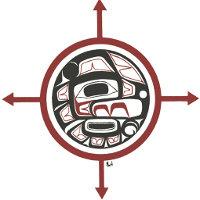Written by Alexa Walker
On May 28, 2013 the Union of BC Indian Chiefs (UBCIC) announced the release of the First Nations Heritage Planning Toolkit, a document designed to support First Nations in the development of heritage related capacity, to provide information to First Nations on developing a heritage plan or policies, and to assist First Nations in responding to development referrals associated with heritage.
In response to increasing threats to First Nations cultural heritage in British Columbia, the UBCIC Working Group on First Nations Heritage Conservation assembled the toolkit in the hopes that it would assist in “negotiating a greater role for First Nations in the protection, management, and conservation of First Nations cultural and heritages sites”. The toolkit reviews the Heritage Conservation Act and other relevant heritage legislation, provides resources and templates to assist in the development of a heritage policy, and gives a broad overview of the referral and permit process, including a description of challenges that are unique to First Nations.
The toolkit begins with an examination of British Columbia’s Heritage Conservation Act (HCA). First established in 1979 and revised in 1996, the HCA is the primary piece of legislation that protects heritage sites in British Columbia. Under the HCA, a permit granted by the British Columbia Archaeology Branch is required before a site may be altered or destroyed. However, as the authors discuss, from a First Nations perspective there are challenges with the BC Archaeology Branch’s interpretation of the HCA and subsequent granting of permits. The first challenge is the HCA’s definition of a heritage site as land “that has heritage value to British Columbians, a community or an aboriginal people”. Operating within this broad definition, the Archaeology Branch has adopted the view that archaeological evidence of use and occupation is the primary requirement for a heritage site to be recognized and protected. Therefore, First Nations spiritual and sacred sites that lack archaeological features are often not protected under this legislation.
A second challenge is that the HCA clearly states that all heritage sites predating 1846— a date that Canadian courts recognize as signifying the establishment of British sovereignty in British Columbia— are automatically protected but provides little guidance on the preservation of more recent heritage sites. Unfortunately, the British Columbia Archaeology Branch has largely escaped the onus of protecting heritage sites dated to after 1846 due to the vagueness of the HCA on this matter. From an Indigenous perspective, heritage sites with continuing cultural significance and ongoing use (such as culturally modified trees) should be protected, regardless of the date of first use. While the Heritage Conservation Act is the most important provincial legislation in place to protect heritage sites, it does not adequately address all concerns of First Nations in British Columbia.
The toolkit contains valuable resources to assist First Nations in the development of a heritage policy. The authors emphasize the need to act preventatively and inform archaeologists, government, and industry about First Nations values before issues arise. Moreover, the need for a heritage policy is growing as there are an increasing number of referrals to First Nations for archaeological studies, now a common component of industry planning processes. The toolkit describes information that should be contained within a heritage policy manual, including a clearly stated purpose of the policy, the process for heritage research and management, agreed upon protocols for the appropriate handling of ancestral remains, and expectations for collaboration with neighboring First Nations and archaeologists. Once a heritage policy has been developed, First Nations face the challenge of ensuring its implementation. Provincial legislation does not automatically support First Nations policy if the proponent of a particular development proposal disagrees with that policy. To overcome this challenge, it is suggested by the authors that First Nations widely distribute the policy and cultivate excellent working relations with others involved in heritage management, as well as with parties involved in land, resource, and industrial development within their territories.
The central part of the toolkit deals with the referral and archaeological permit processes, beginning with First Nations reviewing the referral to developing an appropriate response to a referral or permit. The toolkit contains useful information to assist First Nations in reviewing permit applications and to better understand their rights within the referral process. There is also a detailed description of the types of permits that First Nations will come across. As the authors note, there are three types of permits issued by the BC Archaeology Branch: a Heritage Investigation Permit, a Heritage Inspection Permit, and a Site Alteration Permit. Both academic research and resource management work may be conducted with either a Heritage Investigation or Inspection Permit; however, if a developer wants to modify or destroy a site, a Site Alteration Permit is required. The authors discuss the types of changes that First Nations may suggest when reviewing a permit application, such as modifications to the scope or methodology of the research, requesting a different archaeologist or the establishment of a new repository, and the right to have a representative in the field. In addition, the toolkit provides an assortment of permit related definitions to help build First Nations capacity in the review of permits. Finally, the toolkit discusses the need for an effective process to respond to referrals and the possibility of developing a First Nation Heritage permit process that is distinct from that of the provincial Archaeology Branch. This would provide the opportunity for First Nations to ensure that all individuals conducting archaeology within their territories respect Indigenous values and perspectives on heritage.
An important component of an archaeological permit application is to identify the repository for artifacts that are removed from the heritage site. This toolkit contains a section that provides greater detail on the requirements of an official repository and ways of ensuring that First Nations have access to the stored artifacts. An official repository must be both physically secure from theft and damage as well as being financially secure and able to guarantee long term storage of artifacts. In addition, the repository must be capable of storing and curating a variety of artifacts ranging from faunal and floral remains to delicate material culture. Moreover, the management staff must have the expertise to protect and preserve the artifacts housed within the repository. Lastly, it is essential that the repository’s collections are available for research. The authors also note that every item removed from a heritage site and stored within the repository “is a potential repatriation issue” and repatriation agreements should be made prior to artifact storage.
While the Heritage Conservation Act aims to protect heritage sites, the authors voice their concern that First Nations values and interests are not always fully addressed by the HCA. The final section of the toolkit offers further discussion of the limitations of the Heritage Conservation Act and provides an overview of municipal and provincial legislation that may be used in conjunction with the HCA to give additional protection to heritage sites. The authors highlight Section 4 of the HCA entitled “Agreements with First Nations” which states that “government may enter into agreements with First Nations so that First Nations have much greater involvement in the management of their heritage sites”. The BC government has yet to enter into a Section 4 agreement but the ongoing efforts of UBCIC to begin a pilot project may soon change this. Moreover, the toolkit authors note that the protection offered by the HCA may be augmented by other provincial legislation such as the Government Action Regulation Order (GAR) and Section 15, 16, 17, 66, and 219 of the Land Act. The authors stress that this legislation is not sufficient to replace the HCA but may complement the protection offered by the HCA. Finally, the option of protecting heritage sites under the Local Government Act is also discussed. The utility of the Local Government Act is limited because unlike the HCA, protection of a heritage site is not automatic. Instead, the site must be officially recognized by the local government as a heritage property.
The First Nations Heritage Planning Toolkit is an invaluable resource to First Nations in British Columbia who wish to increase their control over the protection and preservation of their cultural heritage. Not only does the toolkit discuss the challenges in heritage management faced by First Nations, it provides tools such as process flowcharts and letter templates that can be implemented immediately to facilitate change. The release of the First Nations Heritage Planning Toolkit is an important step in empowering First Nations to manage their cultural heritage in accordance with their values, beliefs, and perspectives.






